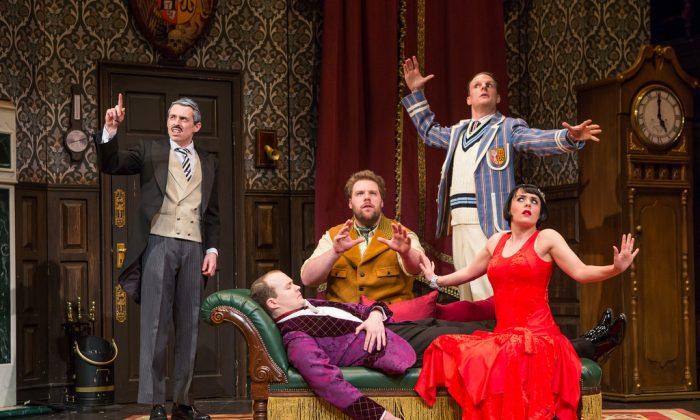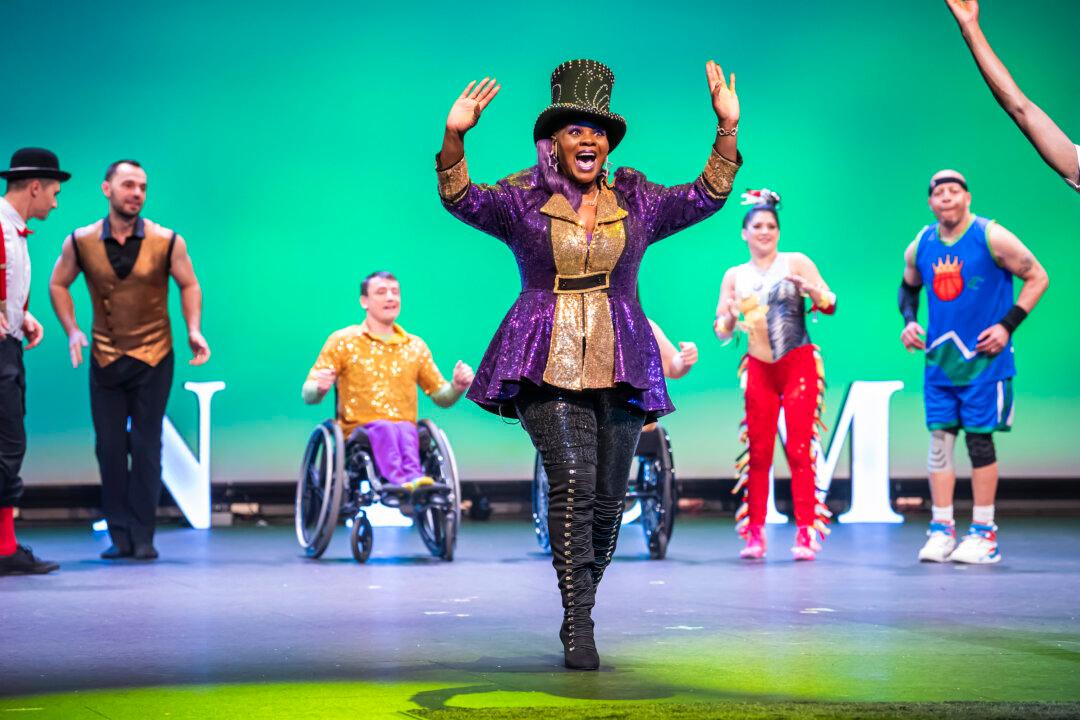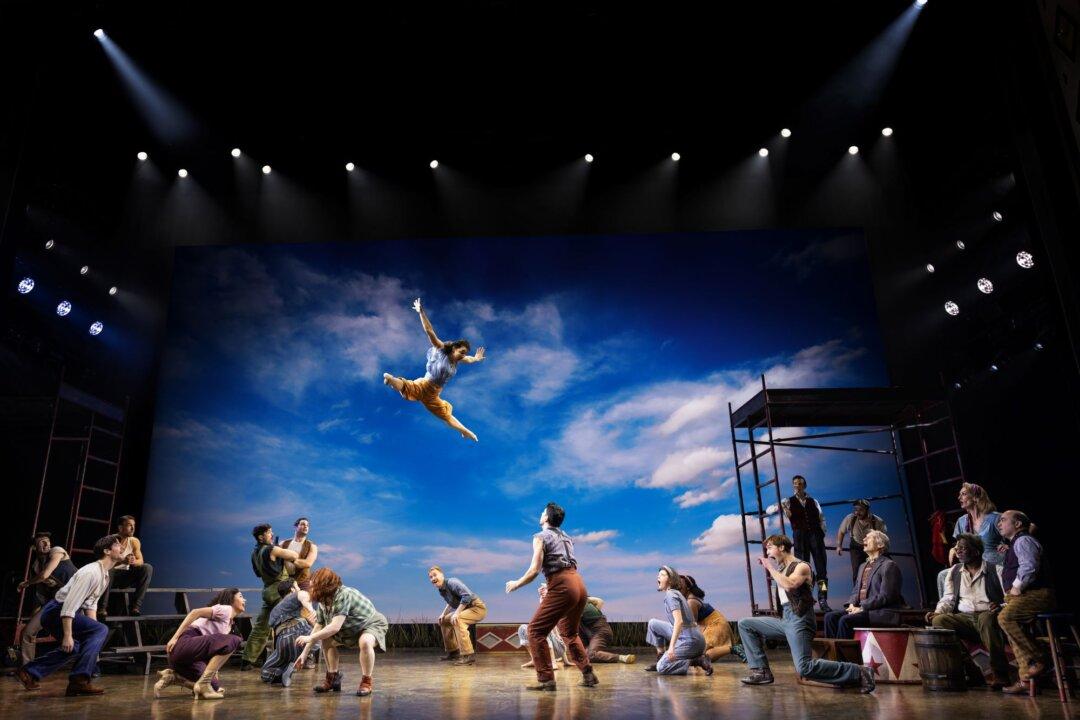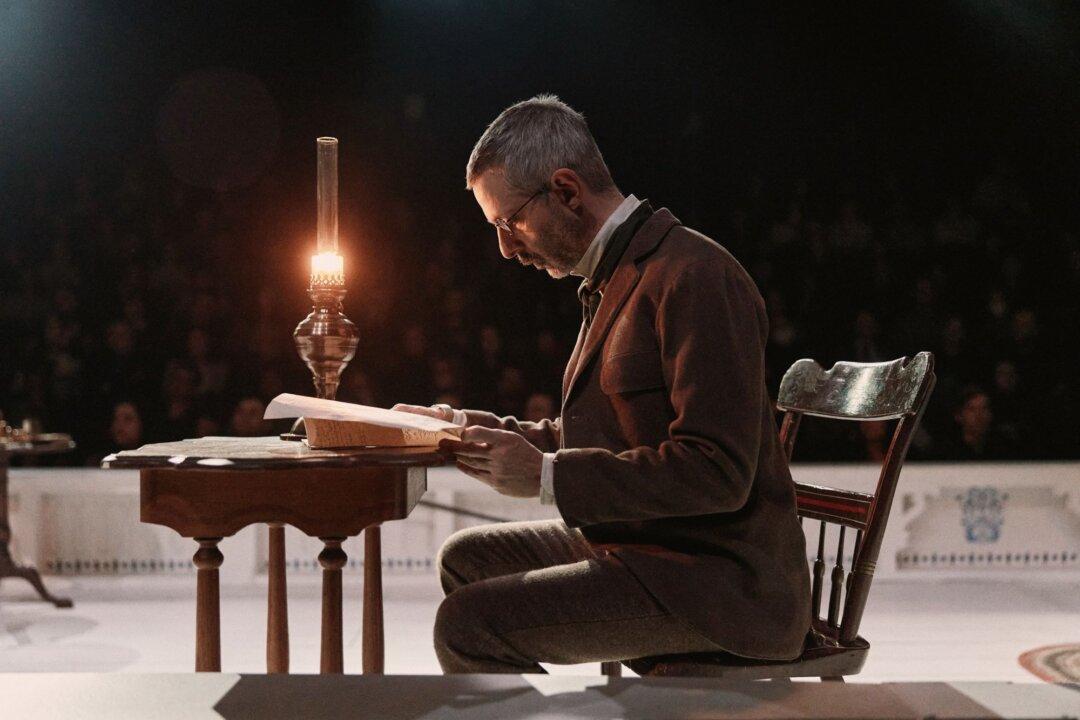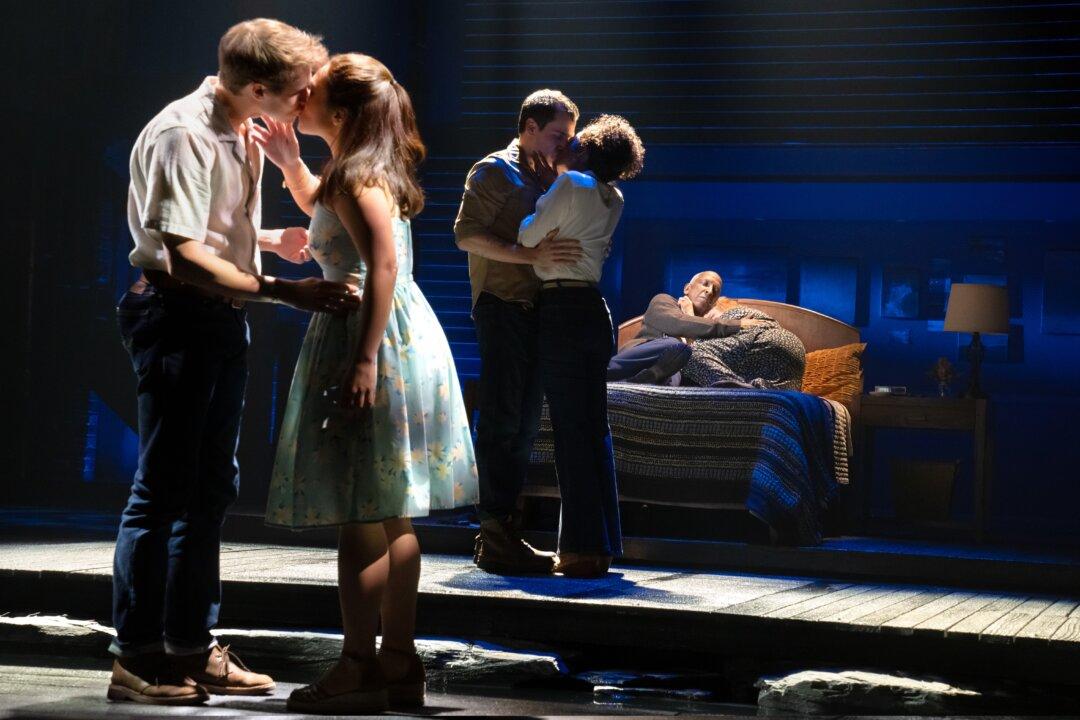NEW YORK—Anybody who has ever worked in theater or attended it on a regular basis has a story about things going amiss on stage, whether it’s falling scenery, malfunctioning props, or actors missing their cues. Books have been written on the subject, along with several plays, with Michael Frayn’s “Noises Off” being the crown jewel in the latter category. Now, a wonderful new homage to theatrical catastrophes has been produced: “The Play That Goes Wrong.”
The plot employs a play-within-a-play framework. The curtain opens on the Cornley Polytechnic Drama Society’s presentation of a murder mystery in the classic Agatha Christie mode. At an English country estate, on the night of his engagement party, Charles Haversham has been found murdered in a seemingly locked room. Among those attending are his fiancée, Florence, his brother Cecil (with whom Florence has been having an affair), Florence’s brother Thomas, and Perkins, Charlie’s loyal butler. There’s also a gardener about somewhere. Arriving soon after Charles’s body has been discovered is the local police inspector, who tries to figure out who killed Charles and why.
However, as the title of the show suggests, the play doesn’t go quite as planned. The cast valiantly tries to follow the storyline, but are forced to deal with one unexpected complication after another. Beginning with their inability to get into the locked room (even though they have the key) with the corpse, things go from bad to worse, with props improperly placed, cues missed, and scenery falling down.
While this group may be a determined company of amateurs who believe the show must go on, they are clearly not up to the challenge of thinking on their feet when things go off-kilter. Rather, they seem to have it drilled into them that they must progress in an exact line from one previously planned moment to the next.
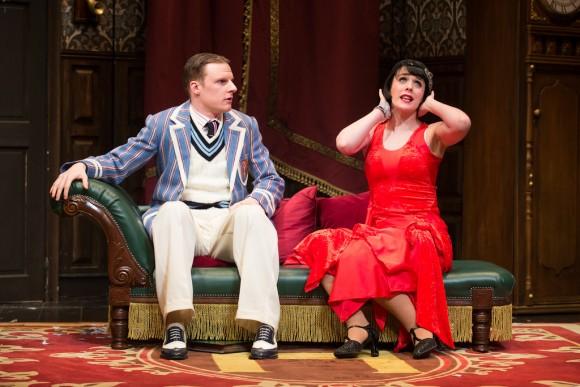
As a result, when the next expected moment in the play does not come, as it invariably doesn’t, the actors are sort of stuck on a Möbius Strip waiting for it to occur.
Two examples of this kind of mishap are a scene repeated until an actor remembers to deliver the correct line, and another scene in which the entire cast stops cold while waiting for a necessary sound effect.
This delay is caused by sound and lighting technician Trevor (Rob Falconer), who is busily scrolling through his emails on his hand-held device rather than following the script. (Trevor’s faux pas is a sort of potshot at those who refuse to put these objects away during a performance and distract those around them.)
Another strong sequence occurs when, during an interrogation scene, a line cue is missed, resulting in the responses to the questions being heard before the questions.
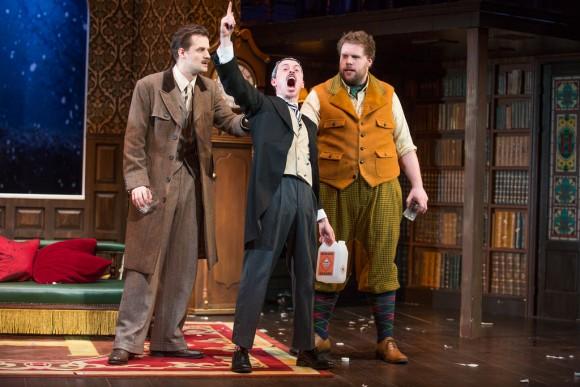
Adding an additional layer of fun is the writers’ decision to make the audience into partial participants in the show. Actor Henry Shields, in the persona of the police inspector, for example, tries to maintain his composure but finally collapses in a ball of hysterics, screaming for a prop which he cannot find. The audience, though, can clearly see it.
Another good moment occurs when the audience sees Trevor, up in his technical area, grip the side of the balcony in horror at the shambles the show has become.
A London import with the original West End cast, the show is helped tremendously in that the writers of the play, Henry Lewis, Jonathan Sayer, and Shields are in the production and all know how to milk their lines and actions for maximum effect. Sayer is absolutely hysterical as an actor who has frequent problems pronouncing his lines. “Ominous” becoming “omoo-noos” and “cyanide” becomes “ky-a-nid-ee” among others.
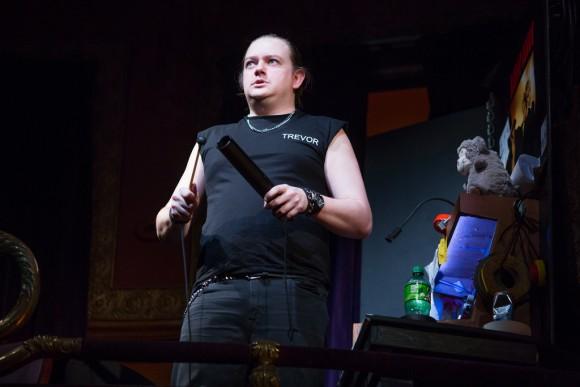
Look also for an early scene where, after discovering the body, Sayer tries to ascertain its status by checking for a pulse on the late Haversham’s forehead. The corpse (Greg Tannahill playing the liveliest dead body in recent stage memory) attempts to correct the mistake by shifting positions so Sayer’s hand moves to his neck.
The only performance that does not really click is that by Dave Hearn. While in character as the brother of the murdered man, he gives frequent knowing looks and smiles to the audience, as if to show how much fun he is having. Unfortunately, these gestures only succeed in destroying the believability of almost every scene he’s in, especially when the rest of the actors are playing their roles in a perfectly serious manner.
Gleefully biting the hand that feeds it, “The Play That Goes Wrong” is a winning farce that depicts every actor’s worst nightmare. The result for the audience is a state of side-splitting laughter. Bravo!
Also in the cast are Charlie Russell and Nancy Zamit.
‘The Play That Goes Wrong’
Lyceum Theatre
149 W. 45th St.
Tickets: 212-239-6200 or Telecharge.com
Running time: 2 hours, 5 minutes (one intermission)
Open Run
Judd Hollander is a reviewer for Stagebuzz.com and a member of the Drama Desk and the Outer Critics Circle.

